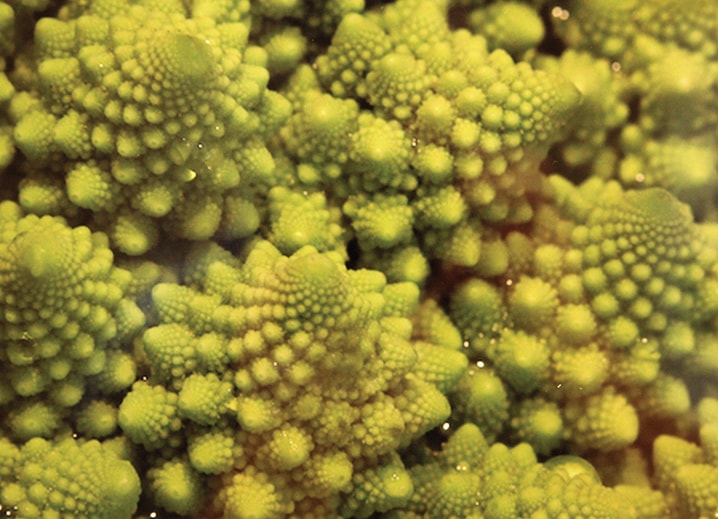How does a cauliflower look like a snowflake? The answer can be gleaned from one of the close-up vegetable photos displayed at the Kiwanis Gallery in Red Deer’s downtown public library.
Besides the snowflake comparison, viewers have also drawn parallels between the cauliflower photo and an undersea plant.
Edmonton photographer Anne Marie Resta has heard so many creative personal interpretations of her work, she thinks of her abstracted images as being something like Rorschach ink-blot tests used for psychoanalysis.
“Another person told me that (an asparagus) looks like a river, or that ‘it looks like a tree I harvested with my dad when I was five.’ ...”
Resta captured details of garden variety veggies, such as beets, green onions and peppers, using a macro lens on her digital camera, and also by using standard 28-to-50-mm lenses.
She purposely did not manipulate any of the photos seen in her Take a Second Look at Your Plate exhibit through cropping or any kind of digital enhancement. “What you see is what you get,” she said of the richly coloured, textural images.
The project was conceived after seeing the Harvey Keitel movie Smoke.
In the 1995 film, Keitel’s character systematically takes an 8 a.m. daily snapshot of the same street corner of Brooklyn with a camera set on a tripod.
Resta, who had previously done other kinds of textural, abstract nature photography, liked the idea of taking regular pictures of the same subject matter over a period of time.
Since she usually preps her vegetables every weekend for use during the following work week, she decided that was a good time to take a closer look at a common food source.
For the next 52 weeks, the photographer snapped photos of her veggies before chopping them up for “salads, snacks, sandwiches and suppers.”
During the summer months, she bought her produce at Edmonton’s public markets.
But Resta began noticing that the availability of supermarket veggies didn’t change much over the winter, since unseasonal items were brought in from the U.S. and other countries.
This got her thinking about the food we eat, how long it travels, and “how much oil and gas it takes to transport things to us in December.”
Resta, who works as a government writer and events photographer when she isn’t taking fine arts photos, started making some small personal changes.
She rides her bike to the public market, tries to buy local whenever possible, and gives to the local food bank in appreciation of the abundance found on her own dinner table.
“People think you have to make these major changes or nothing at all,” she added. “But you don’t have to completely change your life to make a difference.”
Resta still drives to the supermarket — especially in the winter.
“I live in Alberta. I’m not going to be trudging through the snow!”
She hopes her Take a Second Look at Your Plate exhibit, presented by the Red Deer Arts Council, makes viewers appreciate vegetables in a new way, and also gets them thinking about where their food comes from.
The exhibit continues to April 26.
lmichelin@www.reddeeradvocate.com
